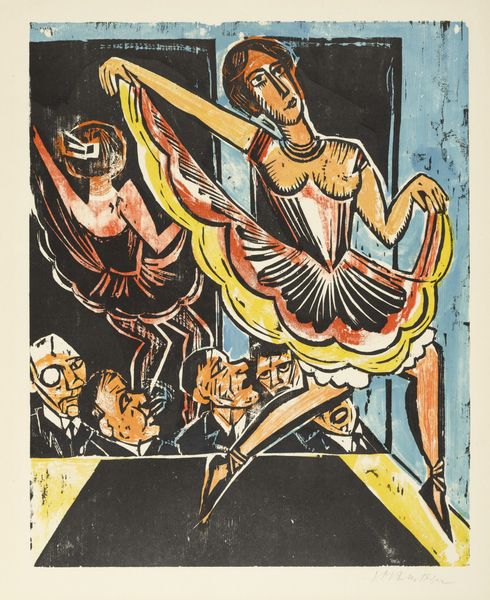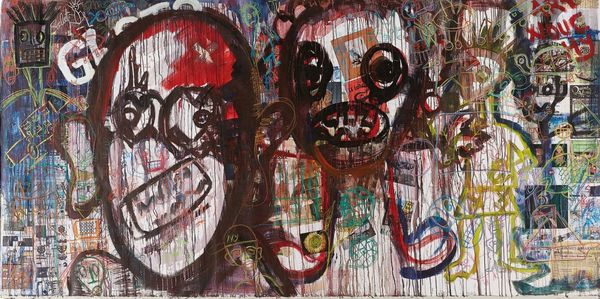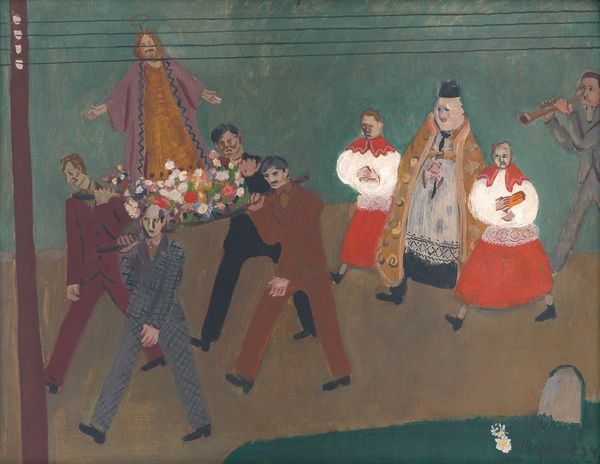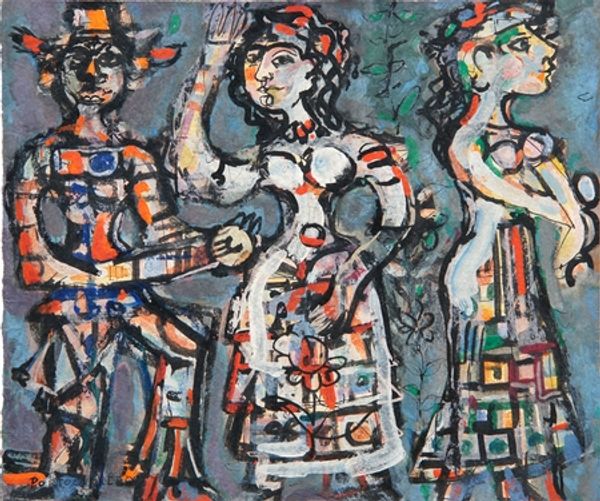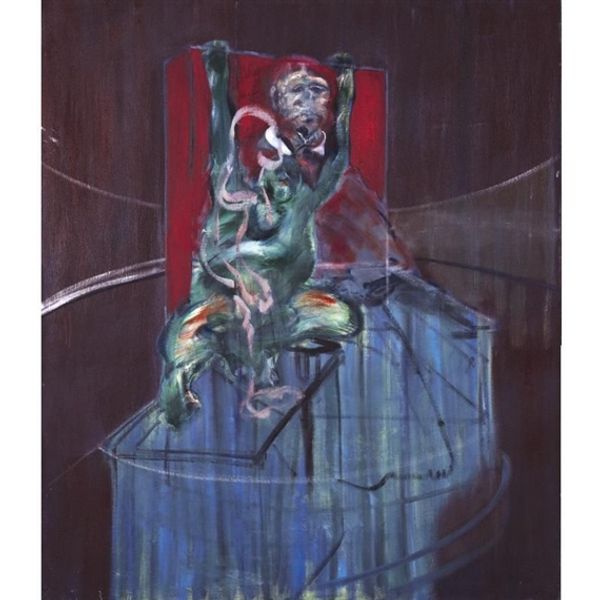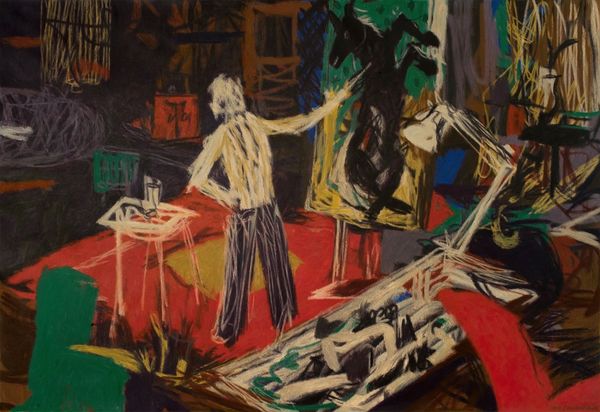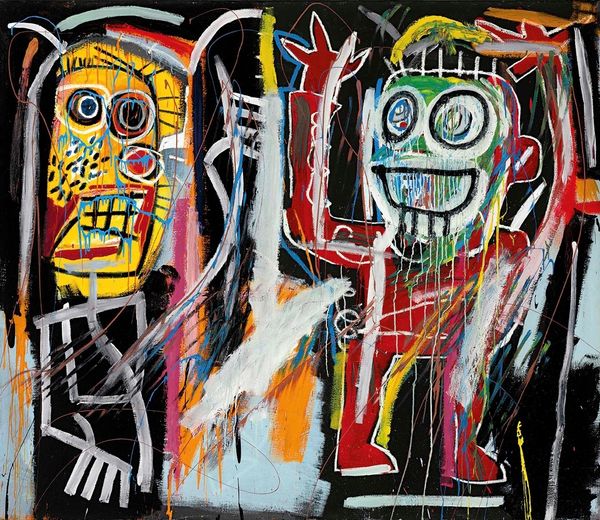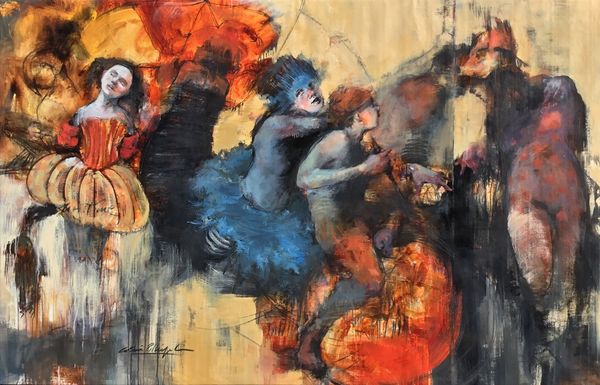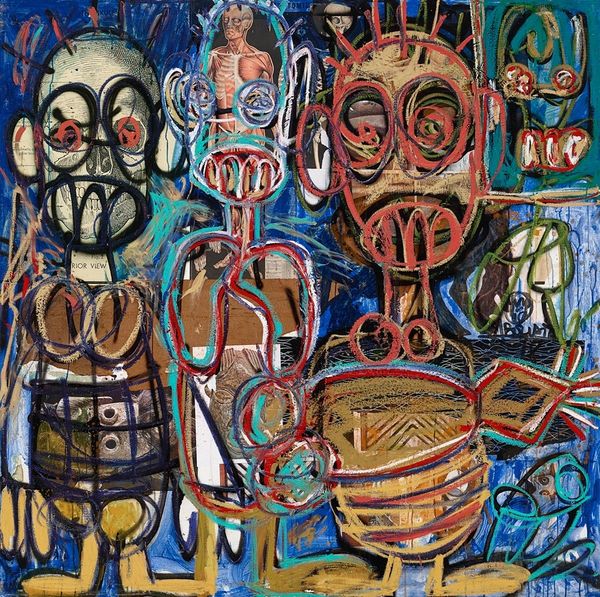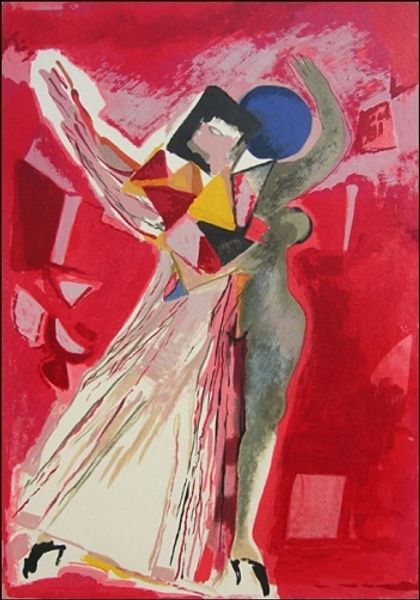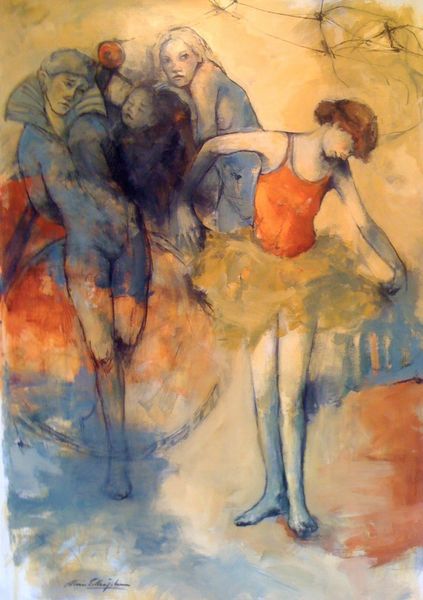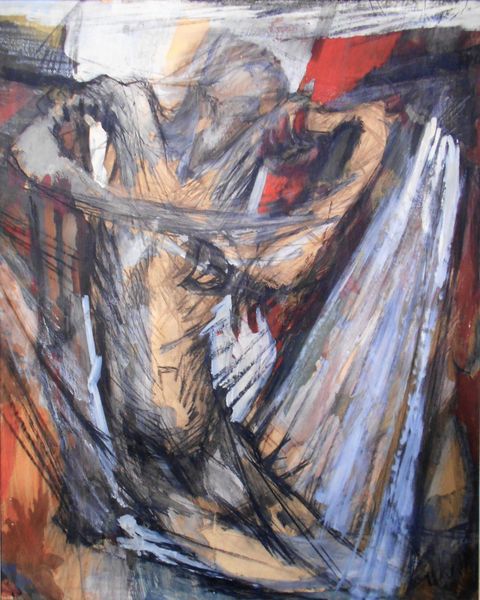
metal, sculpture
#
metal
#
figuration
#
sculpture
#
genre-painting
#
decorative-art
Dimensions: 6 5/8 x 6 1/4 x 4 3/16 in. (16.83 x 15.88 x 10.64 cm)
Copyright: No Known Copyright
Curator: Before us, we have "-Clown," a piece dating back to around 1906, housed here at the Minneapolis Institute of Art. It appears to be made of metal, depicting three figures in theatrical poses. Editor: It evokes a strangely unsettling nostalgia. The faded paint and rigid poses, despite the playful subject matter, give it an almost melancholic air. The scale makes it feel more like a forgotten toy than a monumental sculpture. Curator: Precisely. Consider the formal relationships: the ballerina, Harlequin, and Pierrot aligned on what seems to be a rotating mechanism. Each figure’s pose, rendered in decorative art style, contributes to an overarching sense of controlled motion and static performance. Notice the careful attention to line and form, particularly in the drapery and exaggerated gestures. Editor: Yet, that controlled motion hints at something darker. These aren’t just archetypes, they're frozen in a narrative we can only guess at. Looking at the Harlequin, we have to consider the traditional Commedia dell'arte character within early 20th century culture; who is putting on this show, and for whom? Is it pure entertainment, or a critique of societal roles being performed? Curator: Intriguing! I'm compelled to note that the formal qualities—the geometry of the base, the repetitive use of line—offer an entry point into discussing industrial aesthetics and the emergence of mass-produced entertainment objects at the time. This isn't simply a representation of performers; it is an example of an object created for the stage of capitalist spectacle. Editor: Right, the very medium is suggestive, isn't it? Metal—cold, hard, unyielding, and very deliberately manufactured. The bright colours might suggest carefree performance, but given its possible origin in a child's toy, you can’t help but wonder whose desires are at play when art romanticizes a romantic era? Curator: These divergent readings enrich our understanding and experience! I love how the discussion allows the eye to appreciate technical detail and historical awareness. Editor: Indeed! It proves how the artwork may present diverse avenues through formal, social, or cultural histories, as we move forward to approach our relationship to it.
Comments
No comments
Be the first to comment and join the conversation on the ultimate creative platform.
